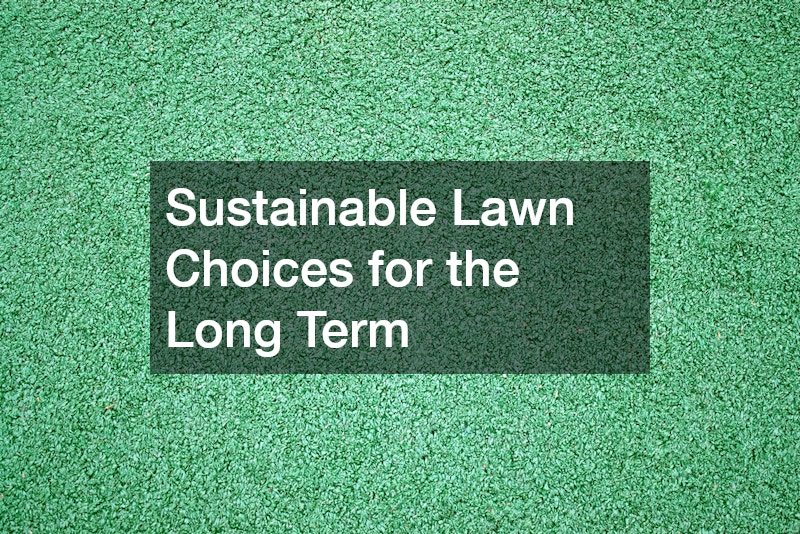
Understanding Australia’s Diverse Climate Zones
Australia’s vast landscape covers a wide range of climate zones, from the humid tropics in the north to the dry, arid conditions in the interior and cooler regions in the south. Choosing the right turf starts with understanding which varieties thrive in your local environment. Climate plays a critical role in how well your lawn performs, its appearance throughout the year and the amount of maintenance required.
In tropical and subtropical regions such as Queensland and northern New South Wales, warm-season grasses like Buffalo, Couch and Zoysia are ideal. These varieties tolerate high humidity, heavy rainfall and intense sun. Buffalo grass, in particular, is popular due to its broad leaves, soft texture and strong wear resistance—perfect for family backyards or high-traffic areas.
For temperate zones including Melbourne, Adelaide, Perth and parts of Sydney, you’ll find a wider selection. While warm-season varieties still perform well, cool-season grasses like Fescue or Ryegrass can also be considered. However, cool-season grasses typically require more watering and maintenance, making them less suitable for long-term sustainability, especially in areas prone to water restrictions.
In arid and semi-arid zones—common in inland areas—drought-tolerant options become essential. Kikuyu and Couch grasses are excellent for dry conditions due to their deep root systems and ability to recover quickly after stress. When selecting turf for these climates, prioritise durability, water efficiency and sun tolerance.
Factors To Consider to Make the Right Choice
Once you’ve assessed your climate zone, consider how your lawn will be used. Functionality is just as important as appearance. Ask yourself whether the area will be exposed to heavy foot traffic, pets or children and how much time you can commit to maintenance.
1. Sunlight and Shade Tolerance
Some thrive in full sun, while others adapt better to shaded spaces. For example, Couch grass grows best with full sun exposure but struggles in shaded yards. In contrast, Buffalo varieties—especially soft-leaf Buffalo—are more shade-tolerant, needing as little as 3–4 hours of sunlight daily.
2. Water Requirements
With many parts of Australia facing water restrictions and rising utility costs, selecting a water-efficient turf can reduce both environmental impact and your water bill. Zoysia grass is a slow-growing but drought-resistant option that stays green longer during dry spells. Kikuyu is another hardy choice that thrives with minimal watering once established.
3. Maintenance Levels
All lawns require care, but some need more frequent mowing, edging, fertilising and weeding. Couch grass, for example, delivers a lush finish but grows quickly—demanding regular mowing during peak growing seasons. Zoysia, on the other hand, grows slower and needs less maintenance, making it ideal for those seeking a low-effort solution.
4. Aesthetic Appeal
Turf comes in different shades, textures and blade widths. Buffalo varieties offer a rich, dark green tone and soft feel underfoot. Couch provides a fine leaf and manicured finish, while Kikuyu displays a vibrant green and dense coverage, giving a bold appearance that fills out bare patches quickly.
5. Budget and Installation Method
Cost is always a consideration. Some premium grass types, such as soft-leaf Buffalo, come at a higher initial price but may save money over time due to reduced watering and fertiliser needs. Installation can also affect your budget—while DIY is possible, professional laying ensures optimal soil preparation and growth.
Sustainable Lawn Choices for the Long Term
With increasing focus on sustainability and climate resilience, it’s more important than ever to choose grass that balances visual appeal with long-term performance. Native and drought-tolerant options provide a responsible choice for Australian homeowners looking to reduce their environmental footprint.
Consider varieties bred specifically for Australian conditions. These grasses are designed to perform under local climate stresses such as heat, drought and pests. Some, like Sir Walter Buffalo, are developed in Australia and proven to withstand harsh summers and unpredictable rainfall patterns. Investing in a locally developed grass often results in better performance and fewer ongoing issues.
For eco-conscious consumers, reducing fertiliser and pesticide use is another priority. Look for grass types with natural disease resistance and low nutrient demands. Zoysia, for instance, has excellent pest resistance and requires minimal fertilisation, helping to keep chemicals out of waterways.
Incorporating water-smart lawn care practices also improves sustainability. Installing a rainwater tank or smart irrigation system allows efficient watering without waste. Additionally, aerating your soil and applying mulch or wetting agents can help retain moisture more effectively.
Choosing the right greass for Australian climates goes beyond appearance. It’s about matching the right variety to your region, lifestyle and long-term goals. By understanding your local environment and selecting a grass type that fits your needs, you’ll create a lawn that not only looks great but thrives year-round with minimal effort.
.




